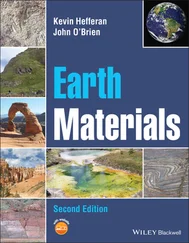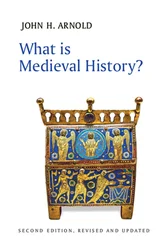Kristen St. John - Reconstructing Earth's Climate History
Здесь есть возможность читать онлайн «Kristen St. John - Reconstructing Earth's Climate History» — ознакомительный отрывок электронной книги совершенно бесплатно, а после прочтения отрывка купить полную версию. В некоторых случаях можно слушать аудио, скачать через торрент в формате fb2 и присутствует краткое содержание. Жанр: unrecognised, на английском языке. Описание произведения, (предисловие) а так же отзывы посетителей доступны на портале библиотеки ЛибКат.
- Название:Reconstructing Earth's Climate History
- Автор:
- Жанр:
- Год:неизвестен
- ISBN:нет данных
- Рейтинг книги:3 / 5. Голосов: 1
-
Избранное:Добавить в избранное
- Отзывы:
-
Ваша оценка:
- 60
- 1
- 2
- 3
- 4
- 5
Reconstructing Earth's Climate History: краткое содержание, описание и аннотация
Предлагаем к чтению аннотацию, описание, краткое содержание или предисловие (зависит от того, что написал сам автор книги «Reconstructing Earth's Climate History»). Если вы не нашли необходимую информацию о книге — напишите в комментариях, мы постараемся отыскать её.
how we know
what we know
Reconstructing Earth’s Climate History, Second Edition,
Reconstructing Earth's Climate History — читать онлайн ознакомительный отрывок
Ниже представлен текст книги, разбитый по страницам. Система сохранения места последней прочитанной страницы, позволяет с удобством читать онлайн бесплатно книгу «Reconstructing Earth's Climate History», без необходимости каждый раз заново искать на чём Вы остановились. Поставьте закладку, и сможете в любой момент перейти на страницу, на которой закончили чтение.
Интервал:
Закладка:
Dr. Kate Pound,Department of Atmospheric and Hydrologic Sciences, St Cloud State University, 720 4th Avenue South, St Cloud, MN 56301, USA, kspound@stcloudstate.edu
Dr. Kate Pound is a professor of geology and a member of the Science Education Group at St. Cloud State University. Pound was the lead instructor for a field‐based course for teachers (TIMES – Teaching Inquiry‐based Minnesota Earth Science Project ) for eight years. She has organized and co‐convened National Association of Geoscience Teachers (NAGT) sponsored teacher workshops Hands‐on, Inquiry‐based Classroom and Lab Assignments – Bringing Geoscience Research to K‐12 and Undergraduate Students, and has co‐convened/co‐chaired associated conference sessions and Hands‐on Galleries . She has worked to develop materials and implement strategies to help visually impaired students in their study of Earth sciences. Pound’s teaching responsibilities include: glacial geology, field geology, rocks and minerals, structure, sedimentology, and the geological environment. She also teaches courses for pre‐service teachers – science for elementary teachers II and secondary teaching Earth & space science. She maintains a sedimentology lab for use in teaching and student‐faculty research and is on the board of the Minnesota Groundwater Association. She participated on‐ice in ANDRILL ARISE (ANtarctic geological DRILLing, Andrill Research Immersion for Science Educators) during fall 2007.
Dr. Megan Jones,Department of Geology, North Hennepin Community College, 7411 85th Avenue North, Brooklyn Park, MN 55445, USA, megan.jones@nhcc.edu
Dr. Megan Jones is a professor in the Earth and Environmental Sciences department at North Hennepin Community College, a diverse (49% students of color, 55% first generation college students), open‐access institution. She has been teaching physical and historical geology, oceanography, Minnesota field geology for the past 20 years. Her broad background and experience in marine micropaleontology/paleoceanography, sedimentology/stratigraphy, and field geology offers her students options to pursue field experiences and undergraduate research. She was a co‐leader of GARNET, the Geoscience Affective Research Network , an NSF‐sponsored group of investigators examining the relationship between student affect, in this case, motivation, and their success in introductory geology courses. Jones worked with Pound on the successful Metro Area TIMES Project Teaching Inquiry‐based Minnesota Earth Science , a 10 day, field‐based, summer institute for middle and high school, pre‐ and in‐service teachers.
Dr. Lawrence Krissek,School of Earth Sciences, Ohio State University, 125 South Oval Mall, Columbus, OH 43210, USA, krissek.1@osu.edu
Dr. Lawrence Krissek is a professor emeritus in the School of Earth Sciences, Ohio State University. His primary scientific research focus is on understanding the evolution of climates and ocean environments on the earth during the past 65 million years. He has participated in nine field seasons of research in the Antarctic, including the 2006 and 2007 ANDRILL field seasons, and has participated in nine scientific ocean drilling expeditions through the Deep Sea Drilling Project (DSDP), the Ocean Drilling Program (ODP), and the International Ocean Discovery Program (IODP; formerly the Integrated Ocean Drilling Program). He has served on both US and international committees related to scientific ocean drilling, and has co‐taught the IODP School of Rock twice. He has published both on scientific research and on science education topics. His teaching responsibilities have included oceanography, oceanography for educators, field geology for educators, natural hazards, physical and historical geology, and stratigraphy and sedimentation.
Foreword from First Edition
Climate change has many manifestations, rising greenhouse gas concentrations, sea‐level rise, abrupt climate change, ocean acidification, reduced Arctic sea ice, droughts, floods, hurricanes, melting glaciers and ice sheets, to mention a few. Few would doubt that climate is the environmental issue of our generation, but what scientific evidence causes so much concern about human influence on climate? Some might argue from the point of view of planetary physics; atmospheric greenhouse gases naturally affect the Earth’s temperature and human carbon emissions have elevated carbon dioxide and methane concentrations and, as a consequence, global temperature. Others might claim that predictive climate models project future temperatures, rainfall patterns and sea levels that threaten society. The striking rise in global temperature observed from instruments over the past century also raises concern about future trends and impacts.
As important as these topics are, one field – paleoclimatology – is unique in providing the requisite baseline of natural climate variability against which human‐induced climate change must be assessed. A rapidly growing discipline that draws on ocean, atmosphere, and Earth sciences, paleoclimatology is today an essential foundation of climate science because it addresses climate history beyond the limited instrumental record and during climate states that the Earth may very well experience in the future. Consider these facts: Ice core records provide the primary evidence that modern greenhouse gas concentrations lie far outside the bounds of natural variability of the last 800,000 years. Thanks to tree rings, speleothems, and other records we now know that rising atmospheric and ocean temperatures during the last century cannot be explained by volcanic or solar activity but required forcing by elevated greenhouse gas concentrations. Lake and marine sediment records confirm what is suspected from satellite records – that polar climates are changing at unprecedented rates. Marine sediment records show us that ocean acidification – a major concern owing to human‐induced perturbations of the global carbon cycle – typically accompanied massive increases in atmospheric carbon dioxide in the geological past.
Reconstructing Earth’s Climate History – a novel classroom and laboratory educational guide by Kristen St John, R Mark Leckie, Kate Pound, Megan Jones and Lawrence Krissek – represents a major, long overdue effort to educate future generations about methods used to reconstruct climate history. From an academic perspective, the book exemplifies the authors’ lifelong dedication to teaching. It includes practical discussions and exercises that teach students how climate history is reconstructed from “proxies” extracted from sediments, ice cores, speleothems, tree rings, coral skeletons, and other archives. It prepares students to engage in field and laboratory research to distinguish natural from anthropogenic climate change, evaluate computer model simulations of climate under elevated greenhouse gas concentrations, and clarify the causes and impact of abrupt climate changes. Equally important, Kristen St. John and her co‐authors also strive to explain why climate history is, and will continue to be, so relevant to policy debates about climate change. It is hoped that students of both natural and social sciences will use it for the benefit of the Earth’s environments and future societies.
Thomas M. Cronin, Senior Research Geologist, US Geological Survey Reston Virginia
Acknowledgments
The first edition of this book evolved out of collaborative efforts on a National Science Foundation (NSF) Course Curriculum and Laboratory Improvement (CCLI) grant (#0737335). The goal of our NSF project was to make the science of scientific ocean drilling research accessible to educators. We set out to write seven data‐rich exercises for the undergraduate classroom. However, we accomplished much more than we set out to do – we essentially developed an entire undergraduate course curriculum that explores the record of Earth's climate history. We had written a book. The first edition of this book would not have happened without the initial funding from NSF, as well as the support of the Consortium of Ocean Leadership, the International Ocean Discovery Program (IODP; formerly the Integrated Ocean Drilling Program), and Antarctic Geological Drilling Program (ANDRILL). We are especially grateful to Leslie Peart, former education director of Ocean Leadership's Deep Earth Academy, who was instrumental in facilitating education and outreach for IODP for many years. It was her vision of the School of Rock Program (which still exists today) that seeded the collaboration of the author team. We are thankful to Cathy Manduca, director of the Science Education Resource Center (SERC) at Carleton College; her insight into the undergraduate curriculum, workshop development, and dissemination were valuable to us, as they have been to the broader geoscience education community. We are grateful to Eric Pyle, professor of geology at James Madison University (JMU) and evaluator of our NSF grant; his input gave us much to consider about teaching and learning. The first edition of the book could not have come together so smoothly without the skilled help of students Serena Dameron and Sarah Rangel, and graphic design consultant Jason Mallett. We thank students Allison (Ali) Dim, Kate Kaldor, and Casey Maslock for helping with some new content for the second edition. We greatly appreciate the constructive comments from colleagues who reviewed draft chapters from the first or second editions. Their scientific and/or pedagogical expertise helped improve the quality of the book, as did the feedback from our students who used draft versions of these chapters in classes and labs. We specifically thank: Stephen Schellenburg, Tom Cronin, Robert DeConto, Steve Petsch, Debbie Thomas, Jackie Hams, David Voorhees, Leilani Arthurs, Paul Holm, Bill Lukens, Kaustubh Thirumalai, Terry Quinn, David Elliot, Berry Lyons, Francine McCarthy, John Olesik, Jim Brey, Tom Gill, Steve Hovan, several anonymous reviewers, and the many faculty whom we have interacted with in professional development workshops that used this book. Very special thanks to graphic designer, Jess Lambert, for working with Kate Pound and the rest of the authors to develop the cover design for the second edition. We would also like to thank the editors, and the development and production teams at Wiley, especially Ian Francis, Delia Sandford, Anna Bassett, Kevin Fung, Marilyn Grant, and Vivien Ward for their guidance on the first edition, and Rosie Hayden, Andrew Harrison, and Karthika Sridharan for their guidance on the second edition. What fantastic, professional teams to work with!
Читать дальшеИнтервал:
Закладка:
Похожие книги на «Reconstructing Earth's Climate History»
Представляем Вашему вниманию похожие книги на «Reconstructing Earth's Climate History» списком для выбора. Мы отобрали схожую по названию и смыслу литературу в надежде предоставить читателям больше вариантов отыскать новые, интересные, ещё непрочитанные произведения.
Обсуждение, отзывы о книге «Reconstructing Earth's Climate History» и просто собственные мнения читателей. Оставьте ваши комментарии, напишите, что Вы думаете о произведении, его смысле или главных героях. Укажите что конкретно понравилось, а что нет, и почему Вы так считаете.



